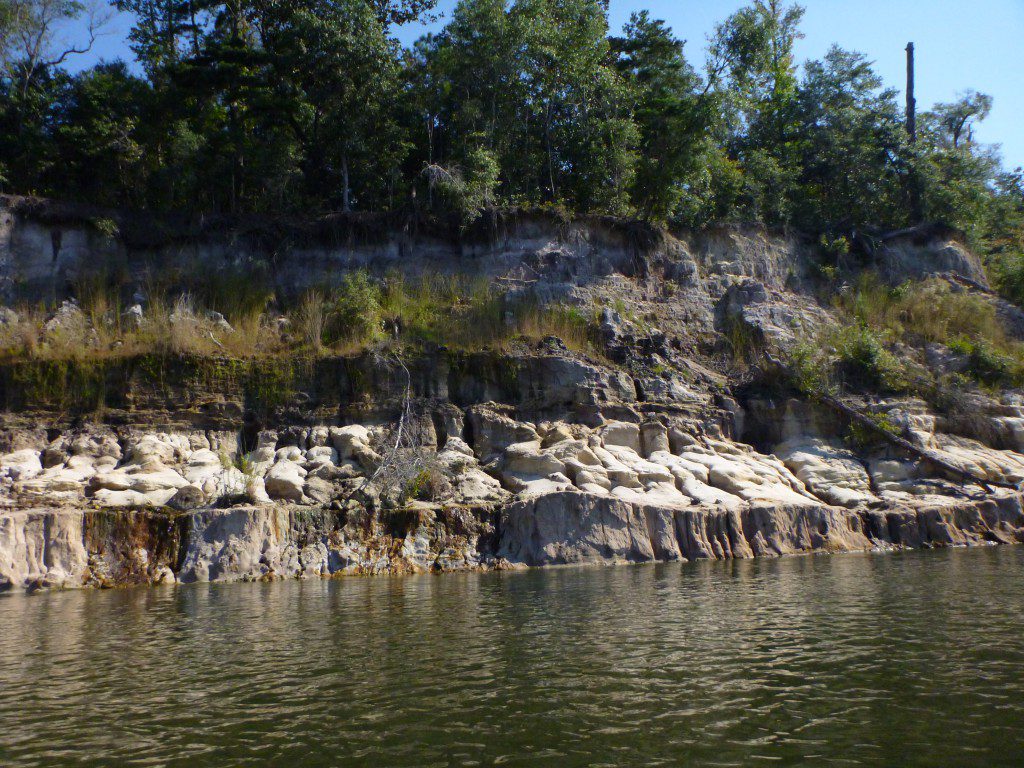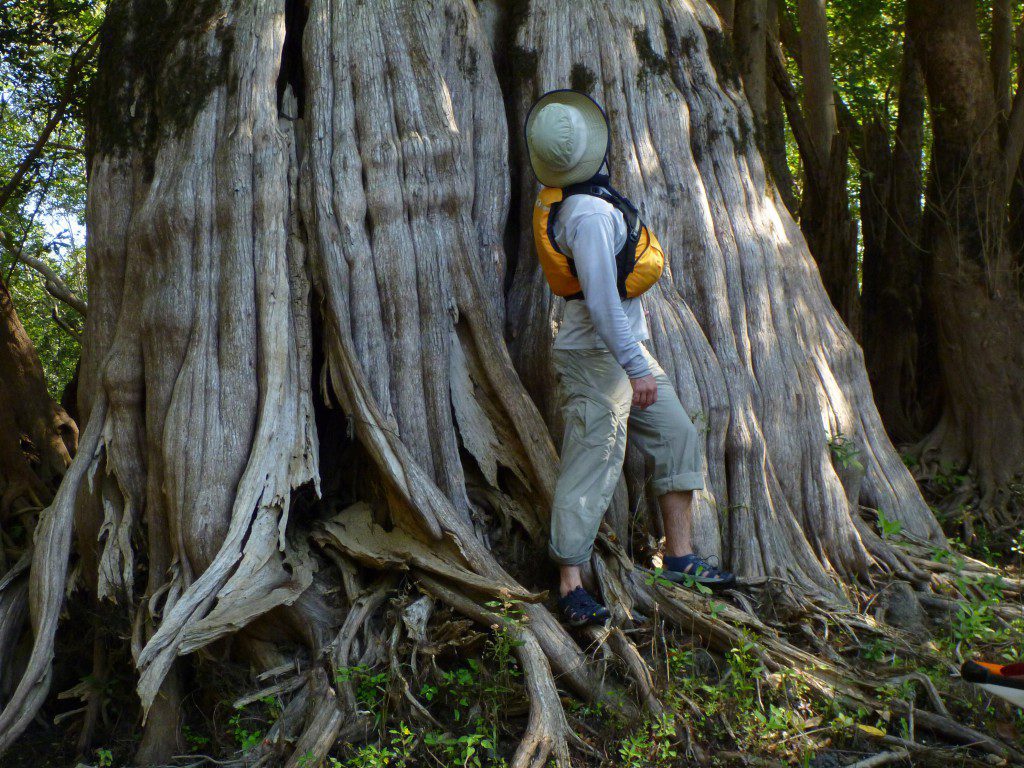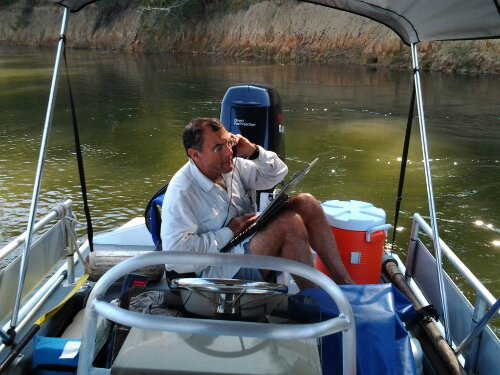Rob Diaz de Villegas WFSU-TV
After breakfast and tearing down camp, Riverkeeper Dan ferried us across the river from the sandbar where we camped to Alum Bluff. The day before we looked at the 150 foot tall bluff and tried to figure out how we would be approaching it from lower ground. When we got across, we were surprised that the plan was to go more or less right up the front, zigging and zagging on some steep and sometimes slippery terrain. Once we were up there, Annie Schmidt of The Nature Conservancy started us on our tour. Where we went up on the bluff is not part of the nearby Garden of Eden trail, so we bush whacked our way through. It was a great morning workout.
 This is the curviest part of the river, the is the most east and west paddling we’ll do on the trip, and the least progress southward. Still, we paddled 21 miles (Mile marker 84- 63). Alum Bluff was the first of much taller bluffs we passed today, made of a combination of limestone, sand, and red clay.
This is the curviest part of the river, the is the most east and west paddling we’ll do on the trip, and the least progress southward. Still, we paddled 21 miles (Mile marker 84- 63). Alum Bluff was the first of much taller bluffs we passed today, made of a combination of limestone, sand, and red clay.
We took a detour up Sutton Creek, near Blountstown. That’s where some of the oldest Cypress trees on the river can be found, with ten foot knees. This river keeps so many unique places like this tucked away like pennies under a couch cushion. Like those pennies, of course, some of the places are kind of hard to reach. If we had had more time, we would have hiked into the cypress.
Josh got out of his kayak and gave us a little perspective:
Tonight we camp at Estiffanulga. Estiffanulga Bluff once served as a base for William Augustus Bowles’ pirate flotilla. Some of the paddlers affectionately call it “stiff and ugly.” I’m not as stiff as I thought I would be, and I would definitely not call this place ugly. Here is where I part ways with videographer Dan Peeri. Dawn and Rick Peffer, who brought us dinner, are shuttling him back to Tallahassee. Dawn made us some fantastic pies (apple and cherry), muffins, and foil wrapped apple fritters for us to eat for breakfast tomorrow. They also brought food from Uptown Cafe. Thanks to the Peffers and Uptown Cafe! And thanks Dan for your hard work.
We ended the night with campfire stories and levity, which I’ve been told not to share on the blog. So I’m being nice…
Dan Peeri was on the boat for several hours of Dan Tonsmeire’s conference calls with legislative members. Here he is hard at work.
For more information on Rivertrek, visit the official page. This page is on the Riverkeeper web site, and you can further explore what they do for the river. (They’re also on Facebook).
The Franklin County Promise Coalition is coordinating aide efforts for families that are being affected in Franklin County through their Bay Aid program. As Dan told us in his original interview, over half of the residents of Franklin County depend on the river for their livelihoods. Learn more about volunteering and other Bay Aid opportunities here.


